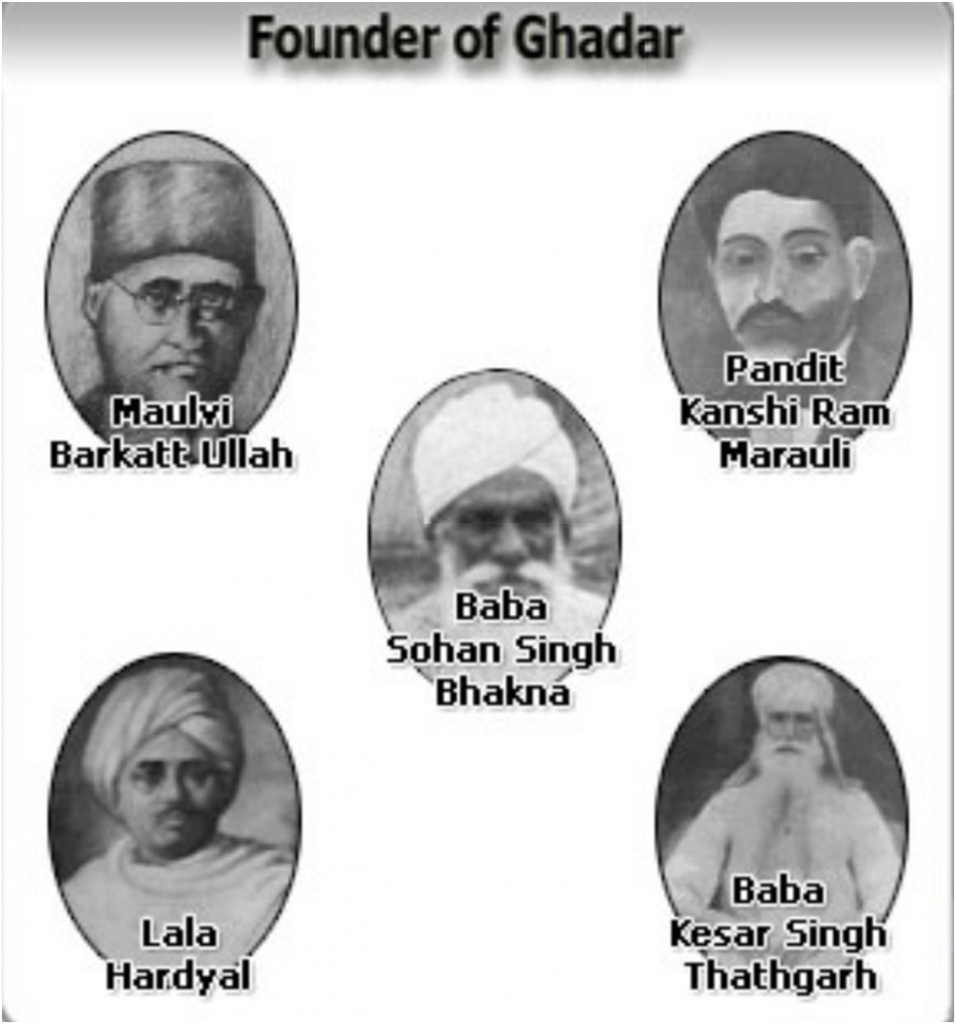
The Ghadr Party was a revolutionary group organised around a weekly newspaper The Ghadr with its headquarters at San Francisco and branches along the US coast and in the Far East.
These revolutionaries included mainly ex-soldiers and peasants who had migrated from the Punjab to the USA and Canada in search of better employment opportunities.
They were based in the US and Canadian cities along the western (Pacific) coast.
Pre-Ghadr revolutionary activity had been carried on by Ramdas Puri, G.D. Kumar, Taraknath Das, Sohan Singh Bhakna, and Lala Hardayal who reached there in 1911.
To carry out revolutionary activities, the earlier activists had set up a ‘Swadesh Sevak Home’ at Vancouver and ‘United India House’ at Seattle. Finally, in 1913, the Ghadr was established.
The Ghadr programme was to organise assassinations of officials, publish revolutionary and anti-imperialist literature, work among Indian troops stationed abroad, procure arms, and bring about a simultaneous revolt in all British colonies.
The moving spirits behind the Ghadr Party were Lala Hardayal, Ramchandra, Bhagwan Singh, Kartar Singh Saraba, Barkatullah, Rash Bihari Bose and Bhai Parmanand.
The Ghadrites intended to bring about a revolt in India.
Their plans were encouraged by two events in 1914—the Komagata Maru incident and the outbreak of the First World War.
Evaluation of Ghadr
The achievement of the Ghadr movement lay in the realm of ideology. It preached militant nationalism with a completely secular approach.
But politically and militarily, it failed to achieve much because it lacked an organised and sustained leadership, underestimated the extent of preparation required at every level—organisational, ideological, financial, and tactical strategic—and perhaps Lala Hardayal was unsuited for the job of an organiser.
Must read: Why Militant Nationalism (1905–1909) Grew in India?
External link: https://en.wikipedia.org/wiki/Ghadar_Movement
PRACTICE QUESTIONS
QUES . Consider the following freedom fighters: UPSC 2022
1 . Barindra Kumar Ghosh
2 . Jogesh Chandra Chatterjee
3 . Rash Behari Bose
Who of the above was/were actively associated with the Ghadar Party?
(a) 1 and 2
(b) 2 only
(c) 1 and 3
(d) 3 only
Ans (d) Explanation: Rash Bihari Bose, Raja Mahendra Pratap, Lala Hardayal, Abdul Rahim, Maulana Obaidullah Sindhi, Champak Raman Pillai, Sardar Singh Rana, and Madam Cama were some of the prominent Indians Ghadar Leaders who carried on revolutionary activities and propaganda outside India
